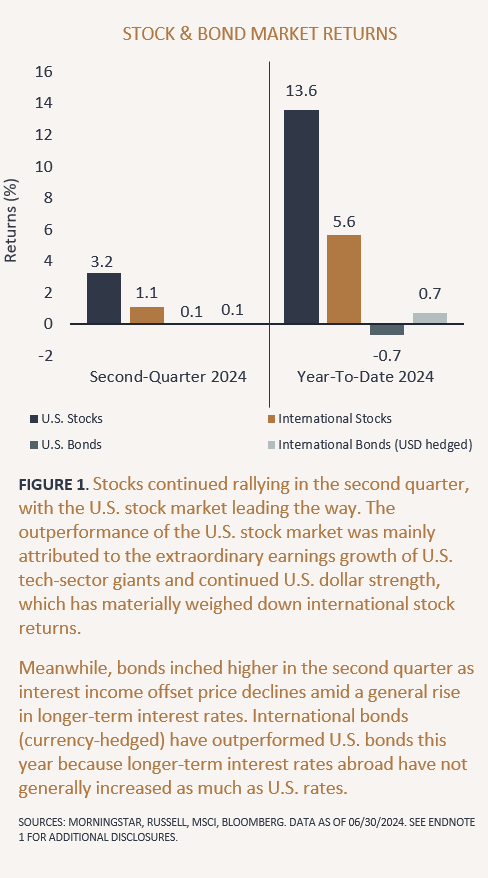A Call to File Early: Ease Your Fall Tax Rush
On July 10, 2025, the Internal Revenue Service (IRS) issued News Release IR‑2025‑74, urging taxpayers who have been granted an extension to file their federal tax return now, instead of waiting until the October 15, 2025 deadline—especially if they are eligible for IRS Free File.([turn0search1])
Rather than risk the fall’s last-minute filing bottleneck, the IRS recommends using its online tools throughout the summer, offering convenience, peace of mind, and more time to address potential issues well before the extended deadline.([turn0search1])
Who Can Use Free File—and How It Works
Eligibility and Options
- IRS Free File: Available to taxpayers with adjusted gross income (AGI) of $84,000 or less for Tax Year 2024. Provides free, guided federal tax preparation through partnered online software.([turn0search1]turn0search6])
- Free File Fillable Forms: Available to taxpayers above the income threshold, allowing self-preparation of electronic forms at no charge.([turn0search6]turn0search24])
Importantly, requesting a filing extension via Free File is also free and counts for all income levels.([turn0search3]turn0search8])
Interactive Tools and Support
Beyond Free File, the IRS offers a suite of digital services 24/7:
- Interactive Tax Assistant for answers to tax questions,
- Online Account access to view records and manage correspondence,
- Payment tools to file and pay early,
- Where’s My Refund? tracker for refund updates,
- Payment plan setup options for taxpayers unable to pay in full.([turn0search0]turn0search1])
Why the IRS Is Encouraging Early Filing
1. Avoid the Fall Rush
Filing over the summer helps taxpayers minimize risk of delays caused by system congestion, technical issues, or tax document errors. Early filing also provides time to resolve missing documents or glitches—important for accuracy and timeliness.([turn0search1])
2. Reduce Potential Penalties and Interest
Even with an approved extension, taxes owed must still be paid by the original April 15 deadline to avoid penalties and interest. Filing earlier helps taxpayers identify balances due and arrange for early payments or plans.([turn0search3]turn0search9]turn0news21])
3. Peace of Mind and Financial Planning
Knowing your return has been filed—or seeing a refund pending—lets you plan ahead. This is especially helpful for those coordinating estimated tax payments, major life events, or needing tax documentation for loans or benefits.
How to Apply for an Extension
Taxpayers who missed the April 15 deadline but filed on time can extend filing to October 15 using any of the following methods:
- IRS Free File or Free File Fillable Forms—free and available to request extensions electronically.([turn0search3]turn0search8])
- Electronic payment with an extension designation—pay online and check the “extension” box; the IRS automatically records it.([turn0search5]turn0search3])
- Paper submission of Form 4868 via mail or through tax professionals.([turn0search3]turn0news19])
Even after securing an extension, taxpayers must estimate their total tax owed and submit payment by April 15 to avoid fees.([turn0search3]turn0search9])
Who Procrastinates and Why Early Filing Matters
Common Reasons for Filing Delays
- Gathering tax documents for small businesses or investments,
- Waiting for 1099s or charitable donation appraisals,
- Dealing with overseas deployments or natural disasters,
- Managing life transitions like marriage, property transactions, or retirement.
In such cases, filing over summer provides the benefit of additional time to finalize tricky documentation, while still avoiding penalty risk.([turn0news22]turn0search2])
Special Circumstances
Taxpayers serving abroad, in combat zones, or living in federally declared disaster areas may already qualify for automatic deadline extensions, often as far out as November 3, 2025.([turn0search3]turn0search2])
The Role of Direct File and Free File in 2025
IRS Direct File
The pilot IRS Direct File program—launched in early 2024—is available to taxpayers in 25 participating states, offering a simplified, interview-based federal e-file process. It remains open through the October 15 extension date.([turn0search10]turn0search26])
Challenges for Free File
The Free File program has faced scrutiny after major tax platforms (e.g. TurboTax, H&R Block) exited it, leading to low awareness and complicated access for eligible taxpayers. Participation rates remained low—despite eligibility reaching ~70% of filers.([turn0search24]turn0search25])
There are also proposals in Congress—via the Big Beautiful Bill—to replace both Free File and Direct File with a consolidated public-private partnership model, raising concerns about reduced access to free tax services.([turn0news18]turn0search26])
Consequences of Waiting—and How to Avoid Them
Filing Failures, Penalties, Interest
Missing both the April and October deadlines can trigger:
- Failure-to-file penalty: 5% per month (up to 25% of tax owed)
- Failure-to-pay penalty: 0.5% monthly (0.25% in certain decades of delays)
- Interest accrual starting April 15
- Minimum penalty of $510 if return is filed more than 60 days late.([turn0search9]turn0news23]turn0news20])
By contrast, early filing—even without full payment—reduces the severity of penalties and allows setup of instalment arrangements.
Higher Risk of Errors and Processing Delays
Late-season technical glitches, incorrect forms, or missing schedules can cause refund delays or trigger IRS audits. Early submission helps identify and fix such issues in time.
Strategies to File Early and Make the Most of Free Tools
Set Goals and Automate
- If eligible, use Free File sooner rather than later—select a partner through the IRS wizard tool.([turn0search24]turn0search0])
- Consider Direct File if in a participating state and your tax situation is simple.([turn0search10]turn0search26])
- Be sure to pay any owed amount by April 15 to avoid penalty, even if filing later.
Leverage IRS Tools
- Open an IRS Online Account to monitor balances, refunds, and notices.
- Use the Interactive Tax Assistant to clarify tricky tax questions.([turn0search0]turn0search1])
- Track your refund via the Where’s My Refund? portal once filed.
What Happens If You Can’t Pay
Even if you can’t pay in full by April 15, the IRS encourages filing or extension immediately. Options include:
- Installment agreements for up to $100K owed,
- Currently Not Collectible status for serious hardship situations,
- Avoiding severe penalties and highlighting proactive engagement.([turn0news21])
Looking Ahead: Will Free Filing Remain Free?
The future of IRS Free File and Direct File is uncertain. Proposed legislation might consolidate or replace these services, potentially limiting access for low- and middle-income taxpayers. For now, both remain available—but their longevity is not guaranteed.([turn0news18]turn0search26])
Final Thoughts: Filing Early Means Choosing Certainty
Taxpayers granted extensions should view them as extra preparation time—not a chance to procrastinate. The IRS strongly recommends filing sooner rather than later to:
- Reduce stress and avoid system delays,
- Minimize penalties and interest,
- Ensure accuracy and give room to resolve issues,
- Access refunds or plan payments with time.
Whether you’re eligible for Free File, Fillable Forms, or Free Direct File, the tools are available right now—making early filing not just responsible, but accessible.






Leave a Reply